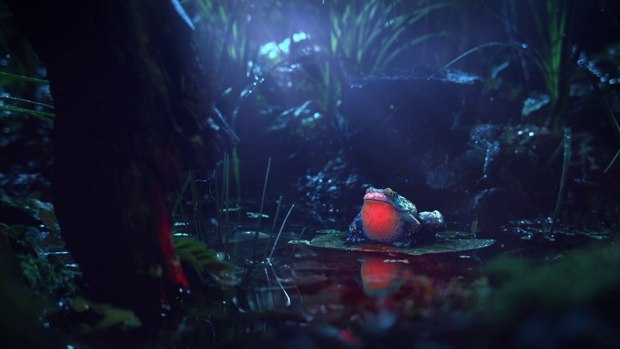The Autodesk-sponsored Visual Effects Society student award evolves into a platform for budding creatives to showcase their artistry and garner attention from the industry.
Autodesk and the VES joined forces to create the award in 2009 after Steven Spielberg called upon the VFX industry to start recognizing the filmmakers of tomorrow. Since then, it has evolved into a platform for budding creatives to showcase their artistry and garner attention from the industry. Former nominees have gone on to work for VFX powerhouses such as The Mill, Method, Pixomondo, MPC, Psyop and more.
Students representing educational institutions from all around the world submit original films each year in hopes of receiving the honor. Autodesk Senior Vice President Chris Bradshaw was on hand at the 12th Annual VES Awards last week to bestow the honor to Alexandra Stautmeister, Matthias Baeuerle, Carl Schroeter, Martin Lapp, Emanuel Fuchs and Fabian Fricke of Filmakademie in Germany for their work on Rugbybugs.
Set in a moonlit forest, Rugbybugs follows six creatures that tap into their unique talents to restore a missing piece of an FMX logo (FMX is an annual animation and effects conference in Germany). To achieve the look and feel, the students built miniature sets inside a studio, which they captured with an ARRI ALEXA camera and snorkel lens to create a bug-like perspective. Using Autodesk 3ds Max, Maya and Mudbox, they then completed modeling, sculpting, texturing and animation, and turned to proprietary tools to rig the characters. You can check out their amazing work below:
While not a prerequisite, many of this year’s nominees also leveraged Autodesk 3D animation, modeling and/or sculpting software to craft their films. The 2014 nominees included:
Initium
Created by ArtFX’s Alexandre Dechel, Adrien Lambert, Larochette Emeric and James Ross-Greetham, Initium is a sci-fi CG thriller that follows Pilot John Carson in a race against the clock to save Earth from ultimate destruction. To create the arctic environments and fluid simulations featured in the film, the team relied heavily on Maya. Watch the film and see how it was made:
Morphium
In this series of comedic vignettes, two monsters fight it over a small wooden toy. Film Akademie’s Linus Stetter used Autodesk Softimage to bring shape and character to the seemingly anamorphous characters. See how he did it in this cool behind-the-scenes video:
Runaway
An unsuspecting gas station attendant is disturbed mid-nap as a monstrous unidentified tank arrives at his station to fill up in Runaway. To find out what happens, watch the film:
ArtFX’s Ludovic Fregé, Quentin Medda, Romain Chauliac and Yoann Gouraud may have started out with just an actor, chair, green screen and few computers for this film; however, employing a combination of techniques from matte painting to tracking, the team amalgamated live-action footage with a large volume of CG elements to deliver a startlingly realistic story. Several CG assets featured in the film, such as a futuristic camera, helmet and the “Salt Eater,” were created using Maya. The Maya 2.0 viewport enabled the team to quickly manage a large number of polygons and textures, as well as receive detailed lighting and shading information in real-time. Check out their “making of” video below:
Where the Dream Begins
Submitted by Beijing Film Academy, Dun Ma, Dan Wen Lei and Xuan Xia, Where the Dream Begins recounts the story of a film school graduate, who falls asleep and is immersed into a dream. Transformed into a miniature figurine, he becomes inundated by familiar classroom elements from origami penguins to a ship miniature – only to awaken and realize it was all a dream.
Source: Autodesk








